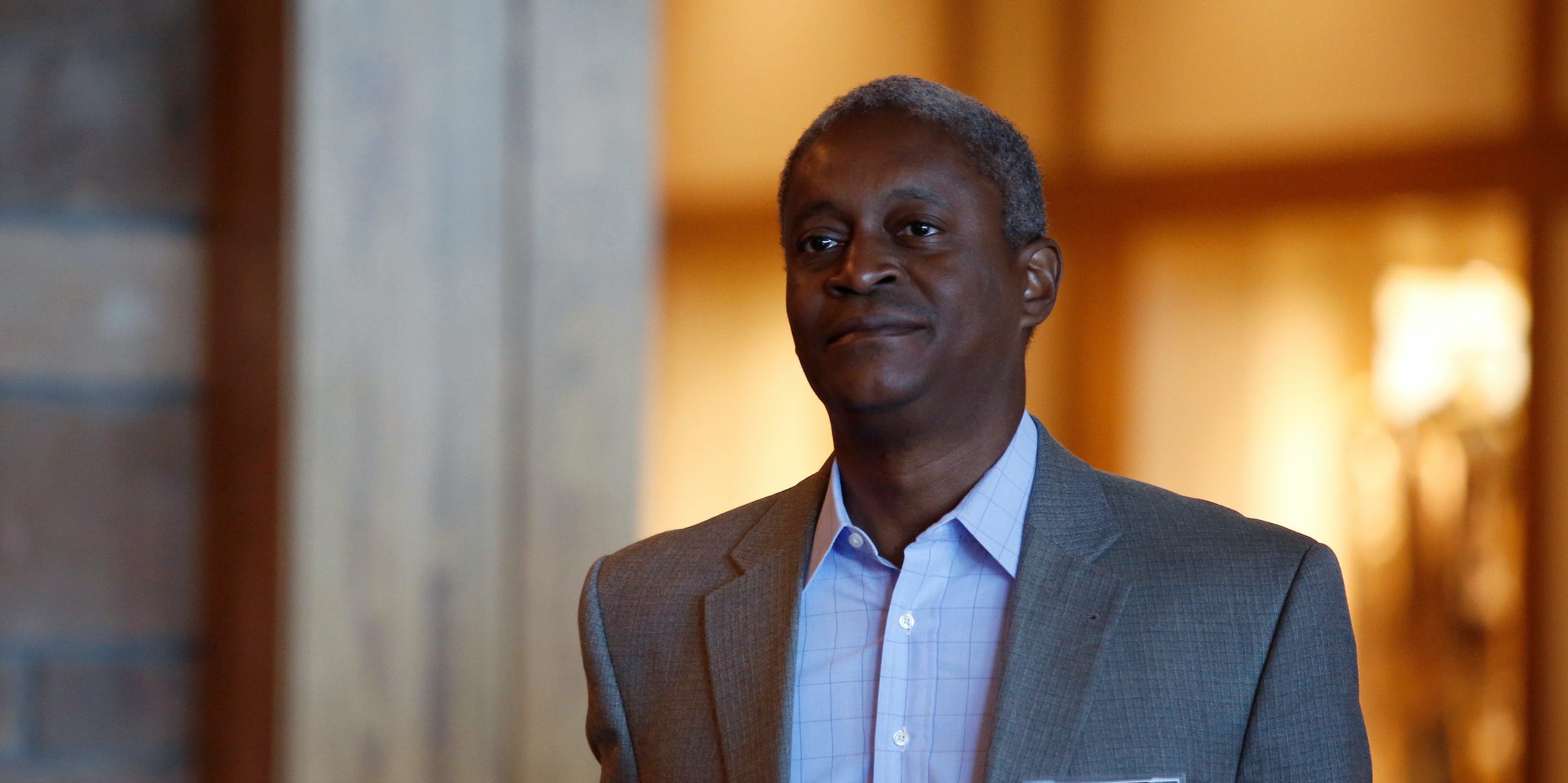
Jonathan Crosby/Reuters
- The COVID-19 economic crisis' "signature characteristic" is how uneven it is, Raphael Bostic said.
- An "inclusive economy is not a zero-sum proposition" and must be pursued, the Fed president added.
- The focus must now be on driving the recovery, and debt worries can come later, Bostic said.
- See more stories on Insider's business page.
The unevenness of the coronavirus' economic impact on minorities and low-income workers is "the signature characteristic" of the pandemic and its fallout, Raphael Bostic, president of the Federal Reserve Bank of Atlanta, said on Thursday.
While the economy has made strides toward a full recovery in recent months, the upswing hasn't been shared across communities. Unemployment rates for minorities remain elevated compared to those for white Americans; the labor force participation rate is far lower for women than men; and the racial wealth cap remains extremely wide even after the passage of several stimulus packages.
The disparities make up what's come to be known as the K-shaped recovery, with the letter depicting the split in how differently Americans are experiencing the recovery. Gaps emerged along the lines of industry sectors, wage levels, gender, and race; acknowledging the uneven damage endured by certain groups can pave the way for a more equitable economy, Bostic said in a virtual seminar with the Economic Club of New York.
"We must cement the notion that an inclusive economy is not a zero-sum proposition," he said. "Pandemic stresses clarified inequality in our society in ways that opened conversations about historical barriers to opportunity."
The Fed's updated policy framework aims to bring about that more inclusive economy. The central bank previously targeted full employment as half of its dual mandate, with the goal defined by a low unemployment rate. Yet that goal still left millions detached from the labor force or holding on by a thread, Bostic said.
The new target of maximum employment sounds similar but pushes for a far tighter labor market. Fed officials have said they're looking to alternative indicators including wage growth and the labor force participation rate for different demographics to judge whether the labor market is equitable and inclusive.
Pursuing maximum employment would also lift potential output and leave the country in a stronger economic position than that seen before the pandemic, Bostic said.
"Ultimately, for all our sake, the nation must reach a place where opportunity is not so tightly linked to race, a place where kids are not consigned to a life of struggle mainly because of the color of their skin," he added.
Pay for the recovery now. The federal debt can wait.
In addressing the broader path of the economy, Bostic noted that stimulus and ultra-easy monetary conditions should stay in place until the country is clearly on a path to pre-pandemic strength. Congress has spent an unprecedented amount on fiscal stimulus, but fear around the national debt shouldn't overshadow how much progress still needs to be made, the Fed president said.
"If you're going to err in this space, then err on the upside," Bostic said of additional stimulus. "We're going to have to figure out how to pay for it. My hope is that, if we have done the relief effectively, then the economy will recover fast and that growth will pay for some of that."
The comments echo those made just hours earlier by Federal Reserve Chair Jerome Powell on NPR. While the path of the national debt is unsustainable, the central bank chief said, low rates ensure that the current shortfall is manageable through the recovery.
There will be a time once the economy recovers that spending and taxation will need to create a more sustainable path, but "that time is not now," Powell added.
